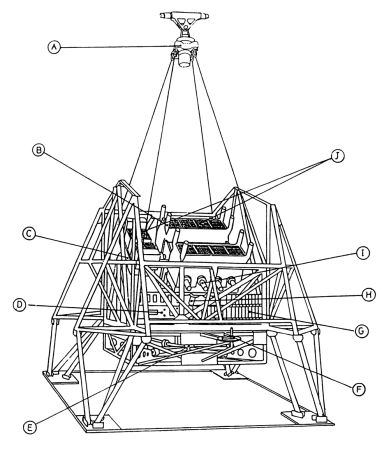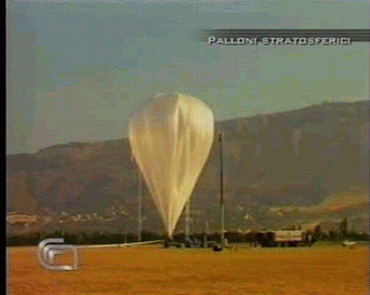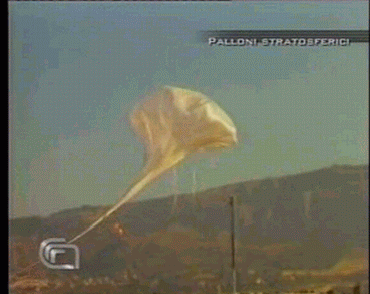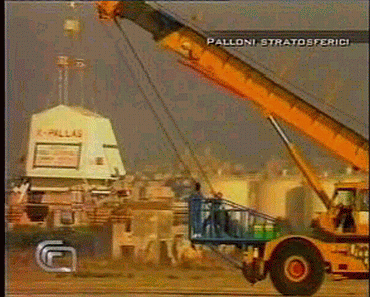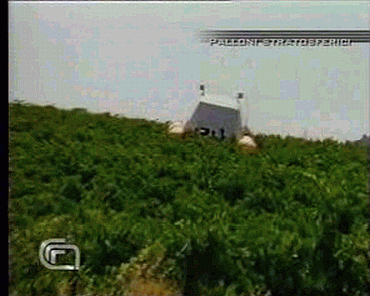Purpose of the flight and payload description
It is a large-area high-sensitivity hard X-ray telescope, operating in the energy range 15-300 keV and is formed of two different arrays: scintillation detectors (NaI, 5.5-mm thick and actively shielded) with a total area of 2700 cm2 and high-pressure xenon gas multiwire proportional counters with a total sensitive area of 900 cm2.
This detector is mounted on a gondola wich includes an elevation drive system and azimuthal control.
The instrument takes their name from the institutions that made it (MIlano FRAscati SOuthampton) and also is referred in certain balloon literature as the PALLAS gondola. Hence the double title.
No scientific data obtained due to the balloon failure.
Footage of the instrument preparation and launch operations
Details of the balloon flight
Balloon launched on: 7/24/1985
Launch site: Base di Lancio Luigi Broglio, Trapani, Sicily, Italy
Balloon launched by: Centre National d'Etudes Spatiales (CNES)
Balloon manufacturer/size/composition: Zero Pressure Balloon Winzen - 800.000 m3
End of flight (L for landing time, W for last contact, otherwise termination time): 7/24/1985
Landing site: Near the launch site, Sicily, Italy
Campaign: ODISSEA 85
Overall weight: 2260 kgs
After a succesfull launch by dynamic method using a the launch crane, the balloon burst on ascent at 16000 mts.
The payload was recovered near the launch site.
It was tried to make a transmediterranean flight towards Spain.
External references
- A large area telescope for balloon-borne hard X-ray astronomy Nuclear Instruments and Methods in Physics Research Section A: Accelerators, Spectrometers, Detectors and Associated Equipment Volume 228, Issue 1, 1984, Pag. 183
- Kernel density estimators applied to hard X-ray observations of the Crab Pulsar Carstairs, Ian Ruthven. University of Southampton, Doctoral Thesis. (1992)
- Les ballons au service de la recherche. L'aérostation scientifique des origines à nos jours. Editions Edite & IFHE (Institut Français de l'Histoire de l'Espace) 2011, Pag. 420
2058If you consider this website interesting or useful, you can help me to keep it up and running with a small donation to cover the operational costs. Just the equivalent of the price of a cup of coffee helps a lot.

